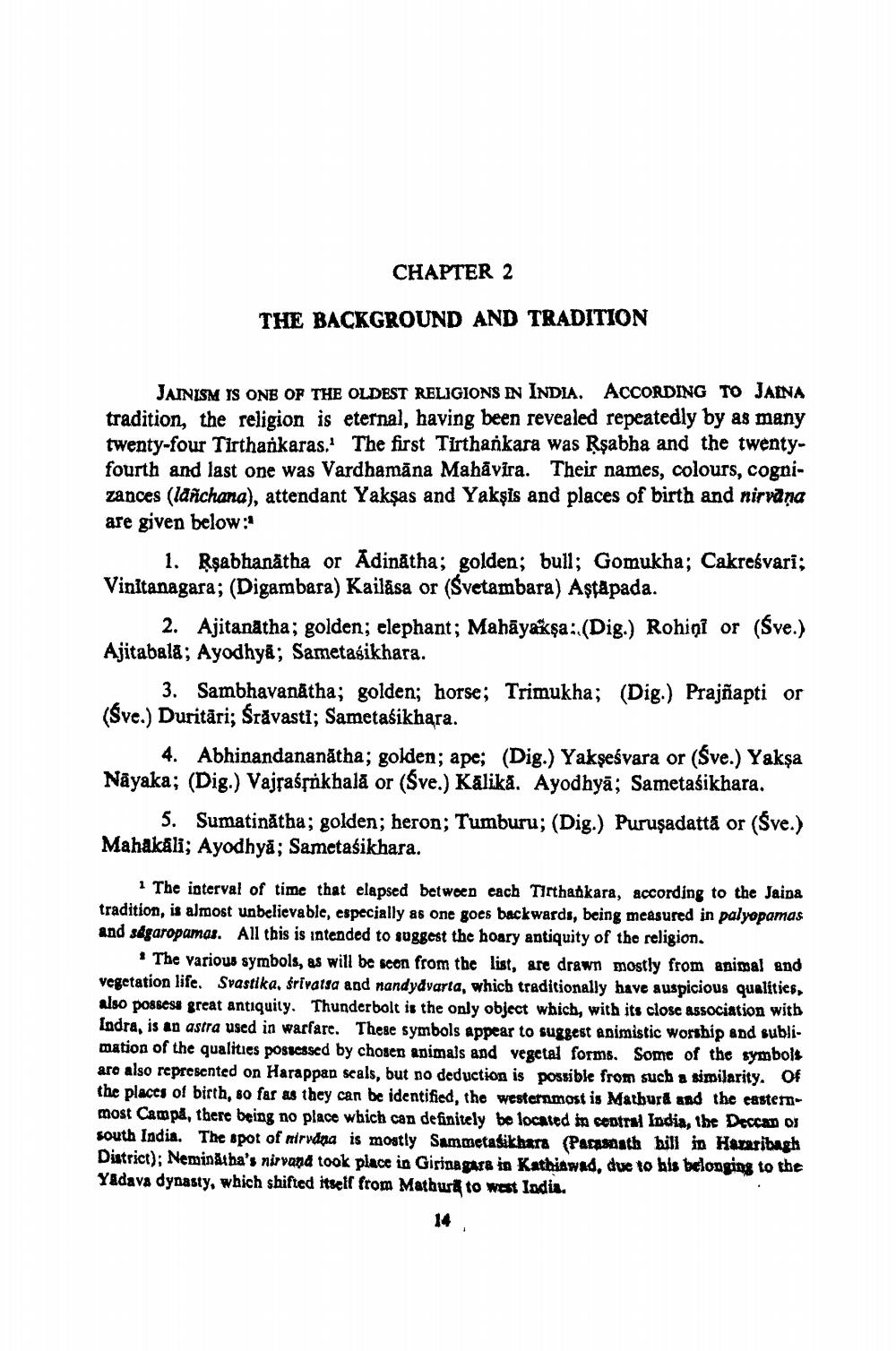________________
CHAPTER 2
THE BACKGROUND AND TRADITION
JAINISM IS ONE OF THE OLDEST RELIGIONS IN INDIA. ACCORDING TO JAINA tradition, the religion is eternal, having been revealed repeatedly by as many twenty-four Tirthankaras.' The first Tirthankara was Ṛsabha and the twentyfourth and last one was Vardhamana Mahavira. Their names, colours, cognizances (läñchana), attendant Yaksas and Yaksis and places of birth and nirvāṇa are given below:
1. Rṣabhanatha or Adinatha; golden; bull; Gomukha; Cakreśvari; Vinitanagara; (Digambara) Kailasa or (Svetambara) Aştăpada.
2. Ajitanatha; golden; elephant; Mahāyakṣa: (Dig.) Rohini or (Śve.) Ajitabala; Ayodhya; Sametasikhara.
3. Sambhavanatha; golden; horse; Trimukha; (Dig.) Prajñapti or (Śve.) Duritări; Śrāvasti; Sametasikhara.
4. Abhinandananatha; golden; ape; (Dig.) Yakşeśvara or (Śve.) Yakşa Nayaka; (Dig.) Vajraśṛnkhalā or (Śve.) Kalika. Ayodhyā; Sametaśikhara.
5. Sumatinatha; golden; heron; Tumburu; (Dig.) Puruşadatta or (Śve.) Mahakali; Ayodhya; Sametaśikhara.
1 The interval of time that elapsed between each Tirthankara, according to the Jaina tradition, is almost unbelievable, especially as one goes backwards, being measured in palyopamas and sågaropamas. All this is intended to suggest the hoary antiquity of the religion.
The various symbols, as will be seen from the list, are drawn mostly from animal and vegetation life. Svastika, śrivatsa and nandydvarta, which traditionally have auspicious qualities, also possess great antiquity. Thunderbolt is the only object which, with its close association with Indra, is an astra used in warfare. These symbols appear to suggest animistic worship and sublimation of the qualities possessed by chosen animals and vegetal forms. Some of the symbols are also represented on Harappan seals, but no deduction is possible from such a similarity. Of the places of birth, so far as they can be identified, the westernmost is Mathura and the easternmost Campa, there being no place which can definitely be located in central India, the Deccan or south India. The spot of nirvana is mostly Sammetasikhara (Parasnath hill in Hazaribagh District); Neminatha's nirvand took place in Girinagara in Kathiawad, due to his belonging to the Yadava dynasty, which shifted itself from Mathur to west India.
14




